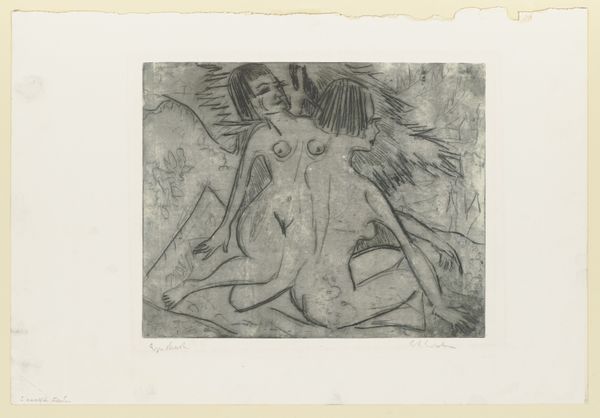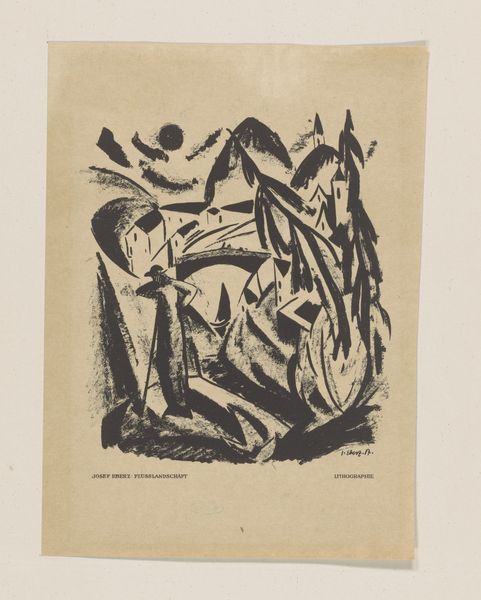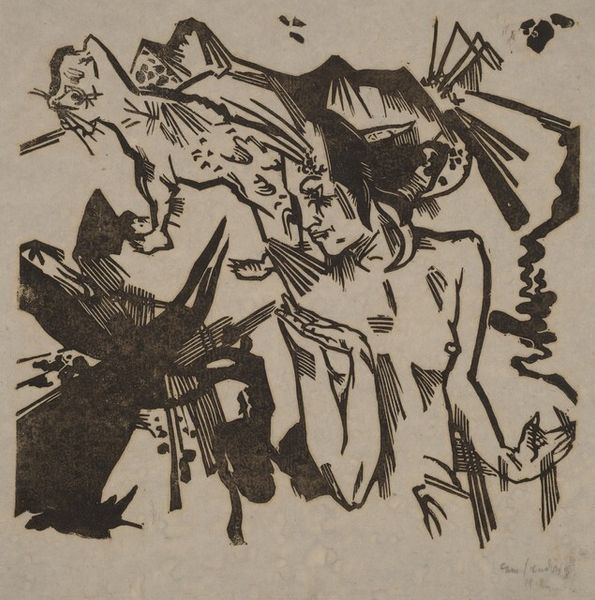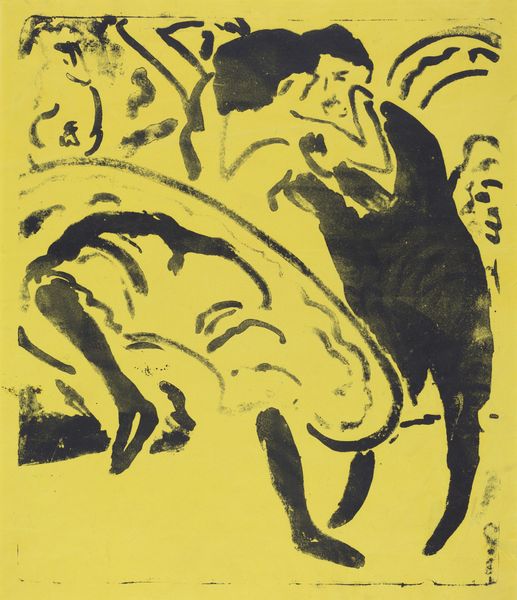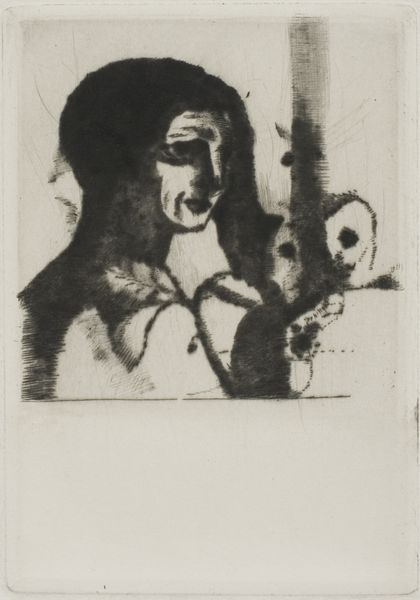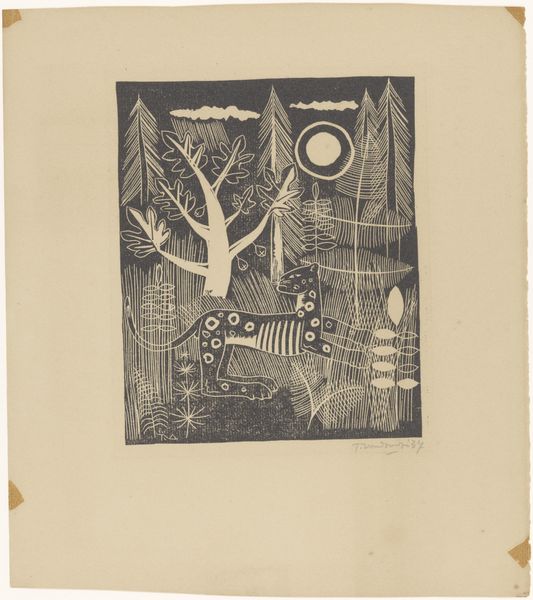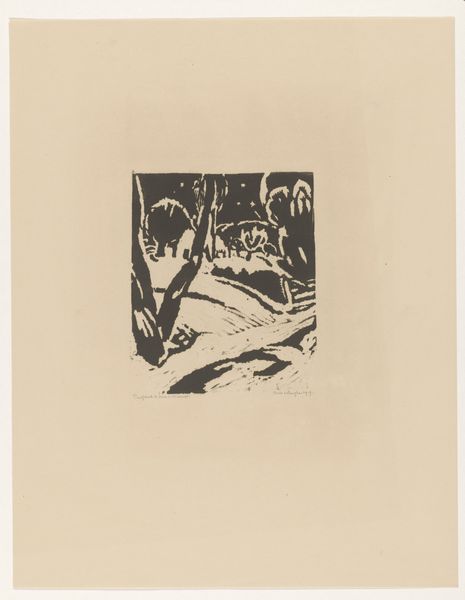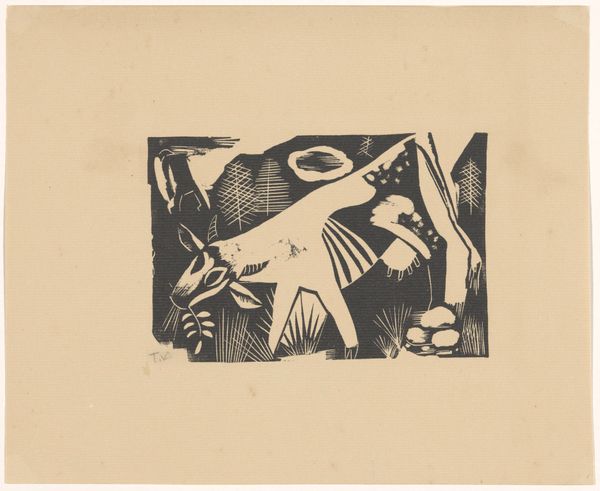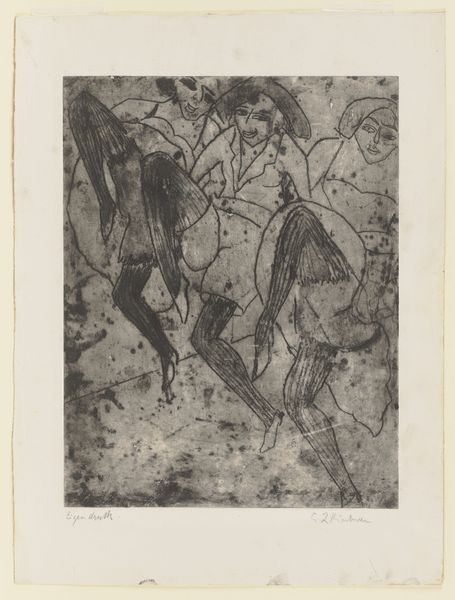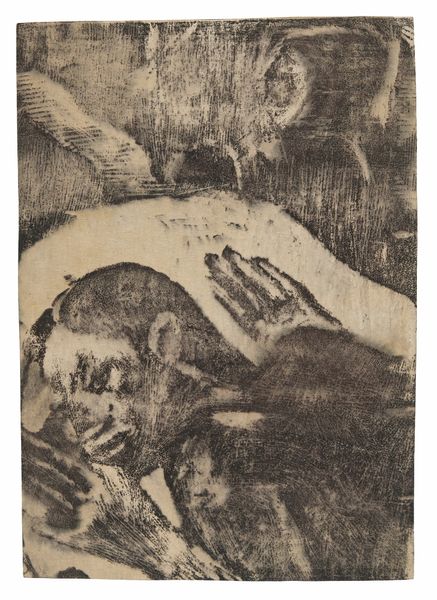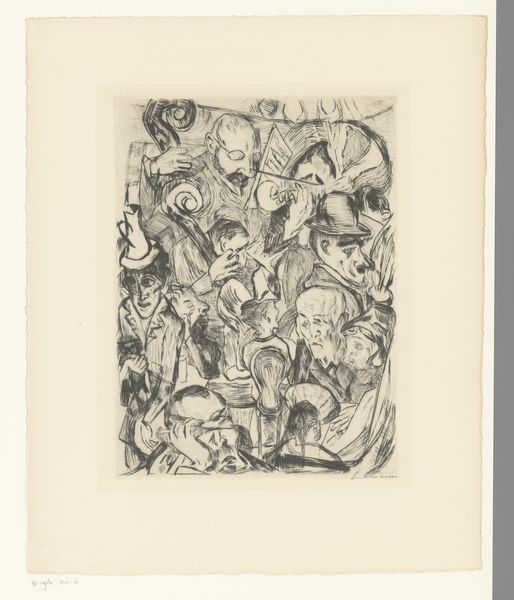
drawing, print, woodcut
#
drawing
# print
#
german-expressionism
#
figuration
#
expressionism
#
woodcut
Copyright: Public Domain
Curator: So, here we have Ernst Ludwig Kirchner’s “Cocotte on the Street,” a woodcut from 1915 held at the Städel Museum. Stark contrasts right? A real emotional punch packed into monochrome. What are your first thoughts? Editor: It’s instantly unsettling. The figure seems almost masked, consumed by shadows, and the angular lines contribute to a sense of disorientation. There’s an almost demonic energy in those stark whites and blacks, as if she is a demon on the loose on the street. Curator: That's fascinating. You pick up on the demonic, but Kirchner was engaging with the burgeoning city, and the ‘cocotte’ figure – a fashionable prostitute – became emblematic of modern alienation. Look at those harsh lines depicting both the figure and the buildings. It’s like urban anxiety etched in wood. Editor: Absolutely. It’s Expressionist shorthand for societal anxieties made visible. Those abstracted buildings behind her almost become predatory themselves, towering above and seeming to be as dangerous as the figure itself, hinting at corruption. Her posture hints a predator and the hunted all in one; it is pure symbolist commentary. Curator: Definitely. Kirchner, through his woodcut technique, creates an atmosphere almost devoid of tenderness or humanity. Notice how the figure's face seems contorted, almost mask-like. It begs the question: what does it mean to navigate this modern space? Editor: And those large empty eyes? So iconic. As though whatever humanity may have resided there has become barren. Kirchner has made an entire epoch recognizable through that haunting stare. He captures how we process not just figures and architecture but concepts, philosophies and moral compromises through these characters. That the Cocotte haunts the street AND our dreams… the genius of it all. Curator: Right, Kirchner challenges our assumptions, inviting us to confront difficult aspects of our existence. As if through the alienation of that central figure he means to uncover what it means to look into modernity's vacant soul. Editor: It’s a stark visual cry, isn’t it? A deeply evocative confrontation with the anxieties of urban life and how those forces play across individual identities, so that the cocotte remains there, ever suspended. Ever stalking.
Comments
stadelmuseum about 2 years ago
⋮
In front of the Kaiser Wilhelm Memorial Church in Berlin, a cocotte with an umbrella comes straight towards the viewer as in a film close-up. In its technical and compositional interlocking of form and colour, this colour woodcut from two blocks anticipates the woodcut series on “Peter Schlemihl” (inv. no. 65603-65610). The three variations of the Städel Museum bear witness to Kirchner’s experimental handling of the printing technique. Whereas the print made from the block with the fundamental elements of the drawing (the so-called drawing block) can stand its ground as a composition in its own right (inv. no. SG 4372), the example solely in black from the block actually cut for the coloured areas (the colour block) has the appearance of a photo negative (inv. no. SG 4373). In the third example (inv. no. 65598), the artist first printed the drawing block in black, and then, over it, pale impressions of the colour block and the drawing block inked partially in monotype manner.
Join the conversation
Join millions of artists and users on Artera today and experience the ultimate creative platform.
